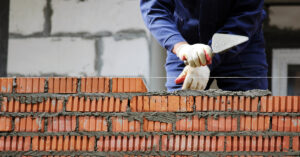In the pandemic era office market, amenities are everything, putting modern spaces squarely at the top of the demand ladder.
Office buildings completed in 2015 or later have registered 51.9 million square feet of net occupancy growth since the beginning of the pandemic, JLL reported, as companies are fighting for spaces offering features to entice workers back into onsite work. That demand has strapped a rocket to rent prices for such office assets, with buildings built 2015 and after commanding 61% more rent than older properties.
New construction is commanding an even larger rent hike. Surveying 24 office projects currently being built in 13 major markets across the U.S. and Canada, Cushman & Wakefield found that new construction rents are running at a premium of 64% over average Class A submarket rents, including 20% over existing “top-tier trophy” assets.
“Tenants are demonstrating a strong bias for the highest quality, newly constructed office projects across major US and Canadian markets,” said Rebecca Rockey, global head of economic analysis & forecasting for Cushman & Wakefield. “They are looking for a fundamentally different, elevated, office experience.
“These modern buildings built for today’s employees offer a platform for companies to enhance culture through a shared workplace experience that can’t be replicated at home.”
New buildings, naturally, have always cost more to lease. But according to JLL, the added price tag for more modern, amenity-packed space is rising. And while pre-pandemic, companies touted features like workout areas, coffee bars and bike storage, today’s big draws include artificial technology that understands daily routines and media rooms designed for video calls.
“In today’s flight for quality, smart office technology is becoming more of an expectation than a luxury,” said David Barnett, research work dynamics director at JLL.
“The smoother environment is going to be a big selling point to get people back into the office. Many employees like working from home and the flexibility so there has to be a good case for returning to the office.”
Of course, hand in hand with the race to offer such features is the challenge to update existing connectivity systems. The requirements for fast internet are more fluid and changing faster than ever before, said Jason Lund, technology infrastructure leader for JLL, but many of the underlying setups in existing office assets — even newer ones — remain mostly the same.
“Wireless connectivity in office buildings is getting worse and worse, and it will get worse as time goes on,” Lund said, citing, as an example, the increased capacity demands of 5G.
“Tenants are coming into buildings now post COVID-19, and they’re operating very differently than they used to,” he added. “And it’s putting much greater strain on existing broadcast technologies in buildings. You have to update and expand the entire system to make it capable of handling all those devices.
“There’s real value to investing in smart technology and the infrastructure that supports it. If you don’t, your building will be last on the office tour, if it’s even on the list at all.”





